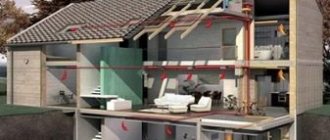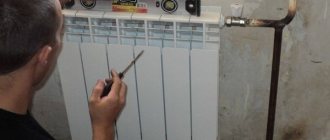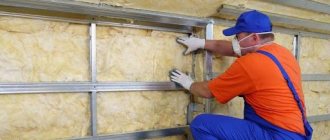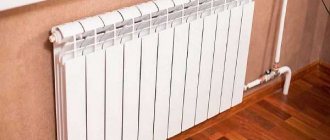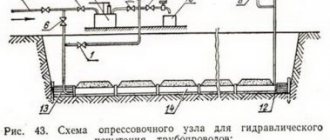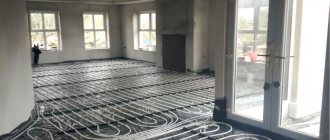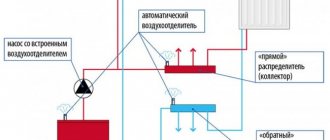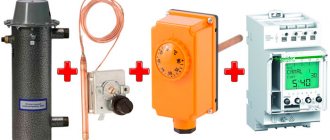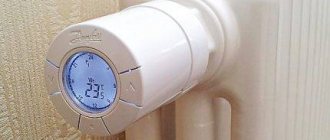Distance from the floor for the office and kitchen
A wider window sill will allow the surface to be used for utilitarian purposes
In such rooms, the placement of the window sill largely depends on the arrangement of the furniture. In offices, the main natural lighting of the workspace is important, so the dimensions should be selected to ensure this condition.
Some people specifically make wide window sills and use them as a desk. On average, the distance from the floor should be about 60-65 cm. These are the optimal dimensions; they will illuminate most of the office.
In the kitchen, the window sill is often combined with furniture, increasing the usable area
In the kitchen, the window sill is often located at a distance of 90 cm from the floor. Most of the kitchen furniture has the same height. With such dimensions, if you place the dining table in the center, it will be fully illuminated.
If you plan to install a bar counter, the height will need to be increased. Under such circumstances, it should be about 120 cm from the floor.
The choice of placement in the corridor is not so critical, because no one stays there for a long time. A landing at 80 cm is considered optimal.
Recommendations
Replacing heating elements yourself is often associated with a number of mistakes. How to avoid them and ensure high heat transfer of the system is indicated in the following recommendations:
- strong fastening of batteries is the key to long-term operation, therefore there should be no less than three fixation points;
- ensuring the correct horizontal level will eliminate the formation of “air jams”;
- regardless of the location of windows in corner apartments, all walls bordering the street must be equipped with radiators;
- creating a reflective screen on the wall side in the plane of the heating element will increase the useful thermal output;
- in a single-pipe wiring diagram, a bypass is installed between the pipes, in the form of a jumper between the inlet and outlet of the coolant, which will allow replacement or repair without shutting down the entire system;
- to calculate the number of heaters, taking into account that the formulas include a significant number of coefficients, it is better to use calculators on construction sites or contact specialists;
- In order to avoid conflicts with the management company when replacing central heating elements in an apartment, actions must be approved in the manner established by the collective agreement.
DIY installation diagram
Even with completely correct installation of heating elements, owners can violate the heating mode themselves. Thick curtains or curtains, decorative screens, wide window sills and flowers on them reduce work efficiency by up to 20%.
Carrying out installation work
Before carrying out installation work, and when choosing at what distance from the floor and wall the heater will be installed, it is necessary to stick aluminum foil on the wall in the approximate location of the device to increase heat transfer and efficiency (efficiency factor). After which you can mark the fasteners.
You should know that there are several options for connecting radiators to the heating system, some of which you can see from the table diagram.
A medium-sized radiator is hung on 2 brackets
When hanging the radiator, you should check all planes, since the heat transfer of the device depends on maintaining the vertical and horizontal position of the heater.
For medium-sized heaters, install 2 brackets so that they fit between the outer sections; if the radiator is large, then install an additional hook strictly in the middle opening of the radiator. To learn how to hang a radiator, watch this video:
Bypass will allow you to regulate heat
When connecting radiators, there are also a number of features and requirements that must be observed. One of these requirements includes the rule of installing a jumper (bypass) between pipes in a single-pipe distribution system, which will make it possible to independently regulate the required amount of heat in the room. The main advantage of the bypass is that the base for its installation does not need to be legalized, and the installation process can be done independently.
It should be remembered that all the rules for installing radiator systems are the same for both individual heating and central heating. If you are going to install new heating elements, you should obtain permission for this action from the management company or the housing office.
To summarize the article, it should be said that choosing and installing a heating radiator is not an easy task.
All measures, requirements and recommendations for the installation of heating elements of a heating system specified in the article can serve every owner who is planning to install radiators on their own and organize a heating system in their house or apartment.
What to do first: floor or walls
How to remove polyurethane foam from linoleum
How to remove paint from linoleum
Necessary theory
There are two types of heating systems that are most widely used these days:
- single-pipe;
- two-pipe.
A special feature of single-pipe systems is the supply of coolant to the house from top to bottom. This scheme is used in most standard apartment buildings. The disadvantage of the system is the inability to control the temperature regime in the home without installing additional equipment. With this heating method, the water in the radiators on the upper floors will be significantly warmer than on those located below.
Heating system installation
With two-pipe heating, the heated coolant is supplied through one pipe, and the water that has given up its heat circulates through the second (return) pipe. This heating system is used in cottages and private houses. The advantage of two-pipe systems is the relative constancy of the temperature of the batteries and the ability to regulate the heating mode.
Radiator installation diagrams
The differences in installation schemes lie in the way they are connected to a private or centralized network.
The most common schemes are the following:
- Lateral connection. Allows you to achieve the greatest heat transfer. The supply pipe is connected to the pipe located at the top, and the return pipe is connected to the bottom. When connected in reverse (water supply from below), the power of the system is reduced.
- The connection is diagonal. Optimal for batteries of considerable length, characterized by minimal heat loss. At the same time, the radiators are evenly heated. The inlet pipe is connected to one side of the upper pipe, and the outlet pipe is connected to the reverse side of the bottom pipe.
- The lower connection (“Leningradka”) is used for hidden pipe laying.
Connection diagram options
Installation of heating devices according to this scheme, characterized by significant heat loss, is used when laying heating pipes in the area of the lower ceiling.
Rules for installing heating radiators according to SNiP
SNiP 3.05.01-85 is a document according to which sections for heating any room are installed. It contains the following provisions:
- The radiators must be placed so that the center of the window and the heating radiator completely coincide. The permissible error is no more than 20 mm.
- According to the rules, the width of the heating battery itself should not exceed 50% of the width of the window opening where the window sill is located in residential premises. Batteries in schools, homes for the elderly and disabled, hospitals and kindergartens should occupy 75% of the light opening. This provision is regulated by clause 3.48 of SNiP 2.04.05-91 and clause 6.5.5 of SNiP 41-01-2003.
- When carrying out installation, it is necessary to take into account that the distance from the floor surface to the bottom point of the section should not be more than 12 cm. The gap between the upper edge of the battery and the existing window sill according to the standards is at least 5 cm.
- As for the distance that is provided from the wall to the radiator, it should be within 10–12 cm. Although it is possible to change these parameters, then it will be necessary to attach a special heat-protective material (mirror insulation or shielding sheet made of aluminum foil) between the wall and the radiator ).
Radiator installation diagram according to SNiP standards
The set of rules (SP 31.13330.2012) and standards states that in U-shaped heating systems it is impossible to install more sections than were used before. If a method of forced circulation of water directly in the heating system is provided, then if there are 24 or more sections, it is necessary to use a versatile connection method.
Battery Installation Standards
Organization of heating is necessary in any country house, and each stage of this work must be carried out in compliance with all technical requirements. Therefore, the correct installation of heating radiators is very important; failure to comply with fundamental requirements will lead to a violation of the technology and reduce the efficiency of the system.
When installing heating radiators in Moscow and other regions, you need to remember not only the correct method of connecting devices, but also the correct selection of the type of heating equipment.
Heating battery installation diagrams
Before you begin installation, you need to decide on the connection diagram. There are the following options for installing heating radiators:
- Lateral connection is the most popular today, since with its help you can achieve the greatest heat transfer. In this case, the inlet line is connected to the upper branch pipe, and the outlet pipe to the lower one. If this rule for installing heating batteries is not followed, the power, and with it the efficiency, of the system will decrease.
- The diagonal connection is great for long radiators, as it will allow the battery to be heated evenly. In this case, on one side, the inlet pipe is connected to the upper pipe, and on the other side, the outlet pipe is connected to the lower one. When supplying coolant through the lower pipe, the power is reduced by 10%.
- The lower connection diagram is used if the heating system runs under the floor. Compared to a side connection, this method reduces heat transfer by 5-15%.
Installing radiators: instructions
After choosing the type of connection, you can begin installing the batteries, taking into account the recommendations of SNIP
In addition, when installing heating radiators, the instructions supplied by the manufacturer should also be taken into account, since if the rules for installing heating radiators are not followed, the right to warranty service will be lost, and you will have to solve problems yourself
According to the installation standards for heating radiators, installation is possible without removing the protective film, this way you will protect the devices from dirt and dust, as well as from scratches during installation. Installation of SNiP heating radiators requires compliance with the following indentations.
- According to the standards for installing a battery, a distance of 100 mm is required from the bottom of a niche or window sill; if the distance is less than ¾ of the depth of the battery, the heat flow will be less and it will be difficult for heated air to enter the room.
- The installation height of heating radiators should be 120 mm from the floor to the bottom of the radiator; if the offset is less than 100 mm, then heat exchange will be difficult, and cleaning the floor in this area will also cause difficulties. If the offset exceeds 150 mm, the temperature difference in height will be greatly increased, this will be especially noticeable in the upper part of the room.
- Correct installation of heating radiators requires a distance from the wall plane of at least 20 mm. When installing the battery close to the wall or with a gap of less than 20 mm, heat transfer will deteriorate, and a dust trail will appear on the top of the radiator.
Installation of heating radiators, photos, videos will help you not to make mistakes during the installation process and organize a reliable and efficient heating system in your home.
SNiP also regulates the procedure for installing heating devices.
- First, the space for the brackets (at least 3) is marked.
- Next, the brackets are strengthened using cement mortar or dowels.
- Installation of Mayevsky tap, plugs, adapters, etc.
- Then they begin to install radiators.
- Next, connect the batteries to the pipes of the heating system.
- After this, an air vent is installed; according to SNiP, it must be automatic.
- Lastly, the radiators are freed from the protective film.
If you follow these rules, radiators will provide warmth in the room during the cold season and will last a long time.
Rules and installation procedure
As a rule, a heating device is installed under the window, since the rising heated air cuts off the cold coming from the opening. To prevent glass fogging, the width of the radiator must be chosen to be 70–75% of the width of the window.
Basic installation rules
SNiP recommends the following rules for installing heating radiators to indentations:
- The heating radiator is installed exactly in the middle of the window opening. Before installation, the width is divided by two, then the distances to the points of location of fasteners are set aside on the right and left sides.
- The radiator should retreat from the floor level to a height of 8–14 cm. A smaller interval will lead to difficulties during cleaning, and a larger interval will lead to the formation of zones of unheated air.
- Radiators should be hung at a distance of 10–12 cm from the windowsill. If you place the device closer, convection will worsen and heat transfer will decrease.
- The distance from the wall to the radiator should be about 3–5 cm; this is the gap size that can ensure unhindered heat distribution and normal convection. If the location is too close to the walls, dust will accumulate on the back surface of the batteries, which is quite difficult to remove.
Taking into account the requirements of SNiP, it is possible to determine the optimal length of the battery and select a model that corresponds to specific conditions.
Distance from the battery to the window sill and floor
The above rules are the same for all types of radiators. Individual manufacturers set their own standards, which must be followed. Therefore, before purchasing, it is necessary to study the installation requirements and make sure that they can be met in specific conditions.
Work order
Installing a heating radiator with your own hands requires careful attention to each stage of work, taking into account every detail. To hang sections, experts recommend using three attachment points: two upper and one lower.
Any sectional battery is hung on holders through the upper collector. Thus, the mount located at the top bears the main load, and the holder located at the bottom serves as a guide and fixing element.
Features of the work
The process of installing heating batteries is carried out in several stages
:
- Marking and installing holders.
- Installation of components on the battery. Modern heating systems require the installation of an automatic or manual air vent. The device is screwed into the adapter and placed on the upper manifold opposite the connection point of the supply pipe. Unused collectors must have plugs installed. If the diameters of the supply and return pipes differ from the cross-section of the collectors, adapters supplied as part of the standard kit should be installed.
- Installation of regulating and locking devices. Regardless of the accepted connection diagram, in any system, shut-off valves in the form of full-bore ball valves are installed at the battery input and output points, allowing the battery to be dismantled without stopping the system in case of repair work or maintenance. The only condition is the presence of a bypass when installing the battery in apartments with a vertical type of wiring.
According to expert recommendations, an automatic or manual thermostat should be installed as a control device. The standards for installing heating radiators do not classify these devices as mandatory; they are required to maintain a temperature in the room that is comfortable for the owners.
- Hanging on brackets. Radiators are supplied in protective film. Before installing the heating radiator, you should not remove the film from the surface - it will protect from dirt and scratches, since the battery is usually installed at the beginning of repair work. If the radiator is installed to replace the old one, the film can be removed immediately after hanging.
- Connecting the supply and return pipes. The connection depends on the circuit. The type of connection (crimped, threaded, welded or pressed) is selected based on the pipes and fittings used.
- Pressure testing of the system or radiator.
When filling the system with coolant yourself, the taps should be opened little by little. Rapidly opening the taps will lead to water hammer, which can damage the battery and destroy the fittings.
Subtleties of attaching to the wall
Each battery manufacturer provides its own instructions, which outline requirements and installation tips. But one requirement is the same: the radiator should be mounted on a pre-leveled and cleaned wall.
Wall mount
Correct fastening of the brackets affects the efficiency of the heating system. Too much slope or skew in any direction can lead to incomplete heating of the battery, to eliminate which you will have to rehang the device. Therefore, when preparing the surface and making markings, the vertical and horizontal positions should be strictly observed. The battery must be hung evenly relative to all planes.
It is allowed to lift it by 1 cm from the side where the air vent is installed, which will cause air to accumulate in this area and make it easier to remove. Sloping in the opposite direction is not allowed.
When installing bimetallic radiators and other types of batteries with low mass, hanging should be done on a pair of hooks located on top. If the length of the device is short, they should be placed between the last two sections. The location of the third bracket must be selected in the middle from the bottom. The hooks can be sealed with mortar after installation.
Hooks for fastening aluminum and bimetallic sections
When placing the brackets yourself, holes are drilled at the designated points and wooden plugs or dowels are installed. The holders are fastened with self-tapping screws with a length of 35 mm and a diameter of at least 6 mm. Such requirements are standard; the norm for a specific battery model is indicated in the technical data sheet.
Panel radiators are installed a little differently. Such devices are supplied with special fastening elements, the number of which depends on the size of the device.
To hang the heating radiator on its rear surface there are special brackets. To install fasteners, you need to know the distance from the center of the battery to the brackets and transfer it as marks on the wall. Next, applying fasteners, holes for dowels are marked. The steps are simple: drilling, installing dowels, securing the brackets with self-tapping screws.
What is needed for installation
To secure heating devices, you will need to purchase various materials and additional devices. Their set is almost identical, but for cast iron batteries, for example, larger diameter plugs will be required, and the installation of an air vent instead of a Mayevsky tap.
The installation of bimetallic and aluminum batteries is absolutely the same.
Required tools and materials
When installing radiators with your own hands, you will definitely need to use brackets or holders. Their number is determined depending on the size of the radiators:
- if you plan to install the device in no more than eight sections or up to 1.2 m in length, two points will be enough for reliable fastening - above and below;
- Every subsequent 5-6 sections or 50 cm of battery length requires adding another pair of fasteners.
To install batteries you also need to purchase:
- linen winding or fum tape;
- drill with a set of drills;
- level;
- dowels;
- elements for connecting fittings and pipes.
Mayevsky crane or automatic air vent
The Mayevsky tap is a device that is used at an unoccupied upper outlet. Serves to remove accumulated air. Such a device must be installed on every heating device when installing aluminum or bimetallic batteries. The cross-section of the Mayevsky tap is much smaller than the cross-section of the collector, therefore the connection is made using an adapter device supplied in the kit.
Mayevsky crane
In addition to the Mayevsky tap, you can also install automatic air vents on the battery, manufactured in nickel-plated or brass. For standard batteries, devices in white enamel housing are not available.
Stub
When connected to the side, the radiator has four outlets. Two of them are for supply and return, the third is occupied by the Mayevsky valve or air vent, and the fourth needs to be closed with a plug. They are made from a variety of materials to suit any type of battery.
Shut-off and control valves
To install and connect the battery correctly, you will also need a pair of shut-off or control valves installed at the inlet and outlet of each battery. Ordinary ball valves are required to quickly disconnect the device from the network during dismantling. The system will continue to work.
Ball Valves
The same functions, but with the ability to regulate the intensity of the coolant flow, can be performed by regulating shut-off valves. Their cost differs greatly, but, at the same time, their aesthetic characteristics are higher. They can be angular or straight.
You can also place a thermostat on the supply pipe behind the ball valve - a small device that allows you to change the heat transfer of the radiator. However, if the battery does not heat well, thermostats cannot be installed, as they will reduce the already low flow. Heat transfer can be controlled by turning the knob to the required division (mechanical devices) or by pre-programming the operating mode of the radiator (electronic thermostats).
Radiator installation
Installation of all types of heating radiators is carried out using the same technology. The difference is represented only by the selected connection diagram and the need to purchase plugs for cast iron batteries of a larger diameter than other types, as well as installing an air vent on them, rather than a Mayevsky tap.
In the bedroom
Tools and accessories
The installation of heating elements is accompanied by the use of the following:
- a set of locksmith tools;
- drill or hammer drill with a set of drills;
- hammer;
- screwdriver or screwdriver;
- accessories for measuring and marking;
- building level and corner.
Purchase the following components and accessories:
- Radiators with a set of brackets or holders.
- Mayevsky cranes that meet the requirements of GOST are better than domestic or European production. Others may be difficult to attach to the radiator.
- Fastening elements for fittings and pipes.
- Plugs, taking into account the installation of one Mayevsky tap per battery.
- Shut-off valves for quickly shutting off a failed heating element from the system for replacement.
Under the window
Installing faucets with smooth heat control on each radiator will significantly save energy consumption and create a comfortable atmosphere in rooms for different purposes. Cranes are available in mechanical or electronic versions.
Preparing the premises
Before starting installation work, it is necessary to prepare the room. If you plan to connect according to the Leningradka scheme, then you should dismantle the floor coverings in the rooms. In other cases this is not necessary.
To ensure that the furniture does not interfere with the dismantling of old heating elements and the installation of new radiators, it is removed to the center of the room. Prepare accessories for collecting residual water from removed batteries, as well as putting things in order at the place where they are attached.
Scheme of recommended deletions
DIY installation
After preparing the tools, accessories and premises, installation begins. The work is performed in the following sequence:
- Make markings. To do this, use a building level and a tape measure. Measure the height of the heating element, add the distance of the radiator from the floor, and make a mark on the wall. Using a level, draw a strictly horizontal line along the mark. The installation points of the holders are retreated from this line and fixed on the wall plane.
- Using an electric drill or hammer drill, drill holes for the dowels. Keeping a distance from the battery to the window sill, screw in the holders. Check the horizontal position again.
- Unpacking the radiator. The device is sold in a protective film. If installation is carried out during the construction period, it is not recommended to remove it until the work is completed. In circumstances where it is necessary, for example, to hang it in the kitchen to replace the old one, the film is removed before installation.
- Heating element layout. A mechanical or automatic air release device is installed. It is screwed into a seat in one of the upper manifolds, opposite the hot water inlet. Plugs are screwed into unused outputs. If there is a difference in diameters, special adapters should be used.
- Ball valves are installed at the inlet and outlet. They provide the ability to dismantle an individual heating element without stopping the operation of the entire system.
- After assembling all the components of the thermal element, it is carefully hung on the brackets. They check the accuracy of maintaining distances in accordance with the requirements of SNiP 2.04.05-91.
- Connect the inlet and outlet pipes. Their fixation depends on the type of connection used - threaded, by crimping or pressing.
Distance from the floor and wall according to SNiP standards
When the battery is first started, water is supplied under low pressure, ensuring smooth filling of the cavities.
Turning on the system abruptly can lead to water hammer, which will damage the housing or destroy the inlet valves.
Installing a heating radiator
Before starting work, consider some nuances:
Before replacing the battery, the water should be turned off only in the customer’s apartment, and not in the entire house.
Only housing office employees who have the appropriate qualifications for this should shut off the water. Even if you replace the battery yourself, entrust this task to specialists. Otherwise, you risk leaving all residents whose apartments are located along the riser without water supply.
Battery replacement, ideally, should also be carried out by housing office employees or workers specially hired for this. If the customer carried out the removal and installation independently, then all responsibility for the serviceability of the system falls on him.
Installation and replacement of the battery when using the pipe bending method and gas welding, instead of the usual installation system, must also be carried out by workers who have certain qualifications to carry out work at an increased level of safety.
Standards
SNiP standards are advisory in nature, but when replacing batteries in an apartment in an apartment building with a central heating system, their implementation is mandatory. This is due to the fact that when designing the house, all the conditions for its further maintenance were taken into account, including, among other things, economical heat supply.
According to established standards, a brick or panel house requires the following:
- The distance from the floor to the battery or radiator should be within 80–140 mm. A smaller installation height will make it impossible to carry out wet cleaning under the device and will provoke the accumulation of dust that is undesirable for human health; a larger one will reduce the useful heating zone.
- The distance between the battery and the window sills should be 100–120 mm. If the distance from the radiator to the window sill is reduced, the conversion of air masses will decrease and the efficiency of the heating battery will decrease.
- Installing heating radiators from the wall more than 30–50 mm is not recommended due to the fact that, as in the previous case, the conversion is reduced and the accumulation of dirt is provoked with minimal possibilities for its elimination.
In the kitchen
The radiator must be hung above the floor exactly in the center of the window opening. This will ensure the creation of a heat shield in the area of the glass filling of the window, while maintaining the aesthetic appearance of the room.
Radiator selection
There is a wide range of radiators on the market today, designed for different buyers. The principle “the more expensive the better” does not always work here. You need to make your choice based on the following reasons:
- place of residence;
- heating system wiring;
- on how the heating radiators will need to be installed;
- temperature conditions in the heating system;
- accounting for what material was used in the production of pipes;
- the need for control elements and fittings;
- location of the premises in the building.
Having completed this analysis, you can proceed to choosing a battery.
Today, cast iron radiators can look quite presentable; they can be decorated. Thus, they can easily fit into the overall design of the room.
Cast iron radiators of the modern type are no longer the huge accordions that were in the Soviet apartment, but flat panels with smoothed corners and a presentable appearance. Having good physical heating properties, cast iron retains heat for a long time and gradually releases it into the room. Such radiators have a long service life, 20-50 years. The main disadvantage is their large weight (one section weighs about 8 kg), so it is impossible to install them correctly in rooms where the walls are made of wood or plasterboard. Having a rough surface, they are not very easy to clean.
Aluminum radiators differ little in design from cast iron ones; the only difference is the weight of the sections (1 kg). Also, such devices have good heat transfer properties, a smooth surface, ventilation windows evenly distribute air in the room, and they can be attached to any surface. The main disadvantage is the easy perception of the chemical composition of water and pressure surges in the pipeline.
Bimetallic radiators are a compromise solution between cast iron and aluminum. Externally they are almost no different from aluminum ones, but are not sensitive to the composition of water and pressure surges. They have good heat transfer performance, are easy to install and are inexpensive.
Steel radiators have a panel appearance and a relief surface. They have various connection options and good thermal properties. No major deficiencies were identified.
How do the gaps between the heating radiator and the wall affect
The designated set of rules according to SNiP 2.04.05-91 are not just approved parameters for installing a heating battery. Fixed figures allow you to reduce unexpected heating costs, for example in an apartment building.
The justification for compliance with the standards is that the external walls of residential buildings are in constant contact with the environment.
Depending on the outside air temperature, the building can cool significantly. For example, most high-rise buildings are built of concrete, which due to its physical characteristics does not allow heat to be retained indoors.
Fastening and installation
It follows from this that if the heating battery is attached directly to the inner wall of the supporting structure, then most of the heat will be directed precisely to it, and not to heating the air. By making a small distance from the wall to the heating radiator, a kind of air insulation is created, thereby reducing unnecessary costs. According to this principle, it is necessary to install all devices indoors.
What distance from the wall to the battery or radiator is provided if the window sill protrudes significantly in relation to the wall is indicated in the standards. The distance between the radiator and the window opening should not exceed 3/4, since the heating of the air in the apartment will be significantly reduced.
Indoor air movement pattern
What to consider when installing other than distance
Taking into account the indicated norms and rules for installing a heating system, it is necessary to concentrate on such recommendations. In order to avoid unreasonable costs, as well as to ensure that heat is retained in a private house or apartment, you should select heating devices based on the following criteria:
- place of residence, namely the climatic conditions of the region;
- existing heating system wiring;
- method of fastening heating sections;
- temperature indicators in the heating system itself;
- you need to take into account what material the incoming pipes and the pipeline connected to the apartment are made of;
- location of living quarters in the building itself;
- choice of regulatory elements.
Under the window
After analyzing all the options, you can proceed directly to the selection of batteries that will be installed, for example, in a private house, apartment buildings and other premises.
Features of installing radiators in an apartment
The given rules for installing heating radiators are general for both individual systems and centralized ones. But before installing new radiators, you must obtain permission from the management or operational company. The heating system is common property and all unauthorized alterations have consequences - administrative fines. The fact is that with a massive change in the parameters of the heating network (replacing pipes, radiators, installing thermostats, etc.), the system becomes unbalanced. This can lead to the entire riser (entrance) freezing in winter. Therefore, all changes require approval.
Types of wiring and connections of radiators in apartments (click on the picture to enlarge its size)
Another feature is of a technical nature. If it is vertical (one pipe enters through the ceiling, goes to the radiator, then comes out and goes to the floor), when installing the radiator, install a bypass - a jumper between the supply and discharge pipelines. Paired with ball valves, this will give you the opportunity to turn off the radiator if desired (or in an emergency). In this case, no approval or permission from the manager is required: you have turned off your radiator, but the coolant continues to circulate through the riser through the bypass (that same jumper). You don't need to stop the system, pay for it, or listen to your neighbors' complaints.
A bypass is also needed when installing a radiator with a regulator in an apartment (the installation of the regulator also needs to be coordinated - it greatly changes the hydraulic resistance of the system). The peculiarity of its operation is that it blocks the flow of coolant. If there is no jumper, the entire riser is blocked. Can you imagine the consequences...
How to place batteries
First of all, recommendations concern the installation location. Most often, heating devices are installed where heat loss is the most significant. And first of all these are windows. Even with modern energy-saving double-glazed windows, it is in these places that the most heat is lost. What can we say about old wooden frames?
If there is no radiator under the window, then the cold air descends along the wall and spreads along the floor. The situation is changed by installing a battery: warm air, rising upward, prevents cold air from “draining” onto the floor. It must be remembered that in order for such protection to be effective, the radiator must occupy at least 70% of the width of the window. This norm is prescribed in SNiP. Therefore, when choosing radiators, keep in mind that a small radiator under the window will not provide the required level of comfort. In this case, there will be zones on the sides where the cold air will go down, and there will be cold zones on the floor. In this case, the window may often “sweat”, condensation will form on the walls in the place where warm and cold air collide, and dampness will appear.
For this reason, do not try to find the model with the highest heat output. This is justified only for regions with a very harsh climate. But in the north, even the most powerful sections have large radiators. For central Russia, average heat transfer is required, for southern regions, low radiators are generally needed (with a small center distance). This is the only way you can fulfill the key rule for installing batteries: blocking most of the window opening.
In cold climates, it makes sense to install a thermal curtain near the front door. This is the second problem area, but it is more typical for private houses. This problem may occur in ground floor apartments. The rules here are simple: you need to place the radiator as close to the door as possible. Choose a location depending on the layout, also taking into account the possibilities of piping.
GOST and SNiP requirements
Correct distance from the floor to the radiator and window sill
Depending on the type of window, the distance from the window sill to the floor may vary. But GOST sets the coefficient at which heat is best retained in the room. It is 0.55 W/°C sq.m. For better effect, use plates with low thermal conductivity. Also, during installation, you need to figure out whether the window sill should cover the battery.
The provisions of SNiP regulate the following values for the distance of the battery to the window sill:
- The window sill must have a slope of at least 1°.
- There must be a layer of thermal insulation between the battery and the wall. It will protect the house from heat loss and extend the life of the heating system.
- The battery should have a protrusion compared to the window sill.
- All window sills must be located at the same level. The distance from the floor to the radiator depends on the shape and size of the device.
- The maximum length of the window sill is 3 meters.
- There must be at least 8 cm of clearance between the battery and the window sill.
The installation standards for heating radiators must be observed to ensure good heat retention in the house. If the distance between the window and the floor is insufficient, a low radiator with an increased number of sections should be installed. Then heat loss will be reduced.
Replacement of heating radiators (batteries) on gas welding.
Our specialists install heating radiators (batteries) on gas welding or threaded connections. Both methods are permitted by SNiP and are reliable and durable. The choice depends on the wishes of the customer and the recommendations of the management company that services your home. We use repair-saving technologies, so there is no need to worry that wallpaper or parquet will be damaged during the work.
SNiPs are building norms and rules of a technical, economic and legal nature, intended for the implementation and regulation of urban activities, engineering developments, architectural design and construction. They contain answers to questions on aspects of construction, provide detailed descriptions of the design, calculation methods, materials, and equipment requirements.
The main objective of this document is to protect the rights and interests of citizens using construction products. The requirements of such technical documents should be minimal to the final result of construction; these are not detailed instructions for the direct implementation of the final goal
Here it is important to comply with all standards for comfortable consumption of the object by consumers, and the methods of achieving this may be different
SNiPs cover all areas of construction from design to commissioning of a house, including heating, electricity, water supply, and sewerage. If you do not use regulatory documents, then over time anything can happen to the object: cracks will appear on the walls, the foundation will settle. An incorrectly designed and installed heating and water supply system can lead to poor water supply to the upper floors or insufficient heat supply in winter. To avoid this, you must fully follow the regulations of the document.
Step-by-step installation algorithm
Silicone tape promotes better sealing of connections
After calculating all the necessary values and choosing a connection method, you can proceed to installing radiators. All work must be carried out in accordance with the requirements of SNiP. You must also follow the manufacturer's instructions. If the instructions are violated, there is a risk of loss of warranty service. According to regulations, you do not have to remove the protective film from the devices during installation. This way the device will be protected from dust and scratches during installation work.
Items required for connection:
- Hooks with plastic dowels - at least 3 pieces. Needed for mounting to a wall or floor.
- 2 side plugs with right-hand thread. They are designated D.
- 2 plugs with left-hand thread with the letter S.
- Stub.
- Silicone sealing thread or flax.
- The elements required by the scheme are taps, valves, valves.
- Pipes. Metal or polypropylene are selected. Metal products are distinguished by high quality, durability and long service life. Polypropylene pipes are cheaper.
Tools you will need:
- Electric drill and drill bit. Selected according to the hardness of the wall.
- Screwdriver.
- Building level.
- Key.
- Tape measure and a simple pencil.
Depending on the design of the radiator, an air vent is selected
The general procedure for installing different parts of the heating system is also regulated by SNiP.
- Making markings for brackets. This is done using dowels or cement mortar. There must be at least three brackets in total.
- Installation of plugs, adapters, Mayevsky taps and other parts.
- Installation of the radiator itself. It is necessary to connect its pipes to the heating system.
- Installation of an air vent. It should be automatic.
- Removing the protective film.
If these requirements are met, the installation of the system will be of high quality and durable.
Wall mount
Wall mounting material
Wall mounting is easier to make than floor mounting.
Installation is carried out as follows:
- Preparing the mounting site. First, the heating circuit pipe is connected. The wall behind the radiator needs to be covered with foil material.
- Preliminary marking of the mounting location for the clamps.
- Installation of fasteners using dowels. The depth into the wall must be at least 6 cm to securely fix the battery.
- Mounting the radiator onto the brackets. Fixing and leveling the device.
- Connection to pipes. Checking the tightness of all connections.
- Test run of the system.
During installation, it is important to make horizontal alignment of the battery. Otherwise, air will accumulate in the device, which reduces the heating intensity and leads to corrosion.
It is also important to comply with the location of the battery. It must be installed strictly in the center of the window
Fastening elements are different. They can be made in the form of suspensions, brackets and other structures. Regardless of the type, they have the same task - securely fixing the radiator to the wall. Instructions for attaching the clamps are included along with the elements themselves.
Floor mount
Floor mounting for large, heavy radiators or thin walls
Heavy and massive radiators cannot always be hung on the wall. Not every fastener can withstand such a load, so they use a floor installation method. For this, special brackets are used. They are more expensive, but their mounting reliability is higher than that of wall-mounted models.
Stages of floor-mounted radiator installation:
- Selection of brackets that are designed to support the weight of the battery.
- Installation on the base area allocated for the radiator. Fixation is carried out using anchor bolts at a distance of at least 6 cm from the wall. The height of the radiator from the floor must be maintained.
- Carrying out concrete work. Filling the base of the brackets and bolt heads with screed.
- Putting hooks on the racks. They are adjusted to the desired height and secured with bolts. If provided by the package, protective metal gaskets are installed.
- Installation on hooks at the pre-calculated height of the battery from the floor. The radiator, as in the case of wall mounting, must be aligned horizontally.
The floor system has an important advantage. All the weight from the battery falls on the floor and is not distributed along the wall
By moving away from the floor, a gap will be created that allows air to circulate. Typically, this scheme is used for heavy cast iron heating radiators, but aluminum or bimetallic devices can also be mounted using the floor method.
Recommendations for installation and operation of radiators
In order for the radiator to warm up well, air is removed from it through the Mayevsky valve
The heating efficiency and service life of the heating system depend on the correct installation of the battery. There are a number of recommendations that you should use during installation:
- It is recommended to lubricate the gaskets with silicone sealant before installation. This is an optional step, but it will help protect the joints.
- Do not open the valves suddenly when filling the heating battery with liquid. Otherwise, water hammer may occur, which will damage the system.
- If thermostatic valves are installed in a single-pipe system, a bypass must be installed. Without it, the entire riser will be regulated, for which the owner may be fined. Ball valves are placed in front of the valves, allowing the supply and return to be shut off.
- If the radiator has more than 12 sections with a one-sided lateral connection, place the flow guide at a length equal to two-thirds of the battery (it is better to do it up to the last section). This will allow the radiator to fully warm up.
- If the radiator fills with water, it is necessary to bleed air from it. If this is not done, the device will not warm up. The air is removed every year at the beginning of the heating season.
After installing the radiator, pipes are connected to it. They are selected in advance by material, cross-section and length.
Recommendations for placing radiators
The efficiency of a radiator depends on its location.
Experts pay great attention to the correct location of heating devices. In this case, the room will be heated with the greatest efficiency.
Basic recommendations for choosing a location for installing batteries:
- For high-quality air circulation near the battery, it is necessary to maintain a distance of 3-4 cm between the thermal insulation layer and the heating device. When this gap decreases, air exchange becomes difficult and the efficiency of the system decreases.
- If it is impossible to create insulation, the inner surface of the wall is covered with a layer of foil. It serves as a heat reflector that directs flows into the room.
- When installing batteries under the window sill, a gap of up to 10 cm must be maintained between the radiator and the floor. The distance from the radiator to the window sill must be at least 8 cm. This is due to the fact that the board is an obstacle when warm air rises upward.
- If the house has large windows, batteries 30 cm high are used. Then condensation will not form on the glass.
- The radiator is installed at an angle of 90°. If there is a deviation from the norm, air will accumulate and corrosion will form.
- The battery should be installed exactly in the middle of the window. Then it will cut off cold air flows and will not allow them to penetrate into the room.
For decorative purposes, radiators can be protected with special screens. They must block the radiator, therefore they reduce the efficiency of the system, since they prevent the flow of thermal energy into the room. For this reason, it is important to pay special attention to the choice of decorative grilles for batteries.
Connection diagrams
- Lateral connection. Characterized by maximum heat transfer. With this connection, the input is made from the top of the battery, and the output is from the bottom on the same side. This is the most popular connection diagram.
- Diagonal connection. Produced with significant system dimensions. Water enters the radiator through the top and is discharged from the bottom on the opposite side.
- Lower connection or “Leningradka”. It is produced in small one- and two-story houses, as well as when installing pipes hidden under the floor. The efficiency of such a system is 5-15% lower than with a lateral connection.
